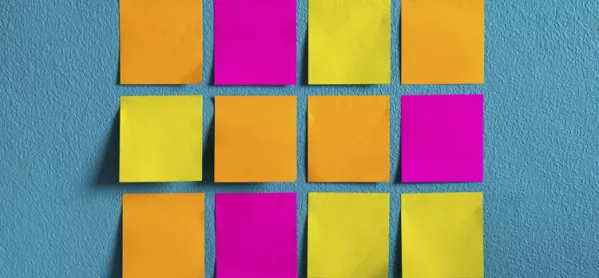Every student starting teacher training should expect to learn about autism in their course, following the publication of the 2016 teacher training framework. I’ve been a teacher for 18 years and wish this training had been in place when I was studying. It would have made a huge difference to my early years in the classroom.
Almost straight after my initial training, I started teaching an autistic student, but I hadn’t been given the knowledge of autism or tools of the trade I needed to understand and help him learn. No doubt many other colleagues feel the same. To this day, I still reflect upon that student with a great sense of guilt, convinced that I did him a disservice through ignorance.
As recently as nine years ago, I taught my second autistic student and only fared slightly better in the classroom. I continued to make mistakes. For example, when I was taking her class on a school trip to the theatre, she had a panic attack when due to be seated in the circle and kept asking if we could sit downstairs. It had not occurred to me to book seats in the stalls and seat her at the end of the row so that she could take a break when feeling overwhelmed. If only I knew then what I know now.
Lessons I’ve learned about autism
When my own son and then my daughter were diagnosed, I had a crash course in autism. I have attended numerous courses and read everything I could on how to help autistic children to access learning, as well as the world around them. Over the years, I’ve learned a huge amount and wish I could share this knowledge with the teacher I was 18 years ago.
One of the biggest things I’ve learned is how different every autistic person is. For instance, my son has great eye contact, is very sociable and gregarious. You will see him joining in with lots of other noisy boys at a birthday party without realising that he has a disability. However, as soon as someone bursts a balloon he becomes very frightened and distressed.
This is why I have tried to take up the mantle of sharing good autism practice within mainstream schools. Teachers are professionals who work in complex and often challenging circumstances every day. They need and deserve to be equipped with the tools and knowledge to help every child in their class to reach their maximum potential. For training, the Autism Education Trust is a good place to start.
I still consider myself to have a long way to go on my autism journey. But here are some of the things I’ve learned so far that I wish I’d known when I was teaching that first student with autism.
Not all autistic children are the same
Every autistic child is different, so get to know them as quickly as possible, read their education plan, utilise parental support (they ARE the experts) and work with your school’s SEN department to tailor your teaching to the specific needs of each student
Routine is crucial
The world can be an unpredictable, confusing place for autistic children and that makes a set routine crucial for getting by. Try to introduce any changes, like a new seating plan or lesson timetable, gradually and using any communication and visual supports the child finds helpful.
Don’t rush
Many autistic children need a little longer to process information. I have had to force myself to count to 12 in class. With my son, I count to 25. Smile encouragingly and count inside; the answers will come. And try not to interrupt the child’s processing time by rephrasing what you said - this just adds to their confusion.
Allow for wiggle room
All children and teenagers are energy-fuelled, and young people with autism are no exception. Try to build in movement breaks into the lesson, perhaps during transitions between activities. If you set this up from the start of the year, it will be part of “This is what WE do”, rather than a sudden change, which can be difficult.
Tap into their world
Where possible, try to adapt your teaching to the interests of autistic students. For instance, my son loves trains. So I often use a blank template of the London Underground (available on Tes Resources) to pre-teach things like key vocabulary.
Siobhan Barnett is a teacher at a school specialising in epilepsy and autism
The National Autistic Society offers free resources on working with autistic pupils through its website and fortnightly newsletter for teachers.

